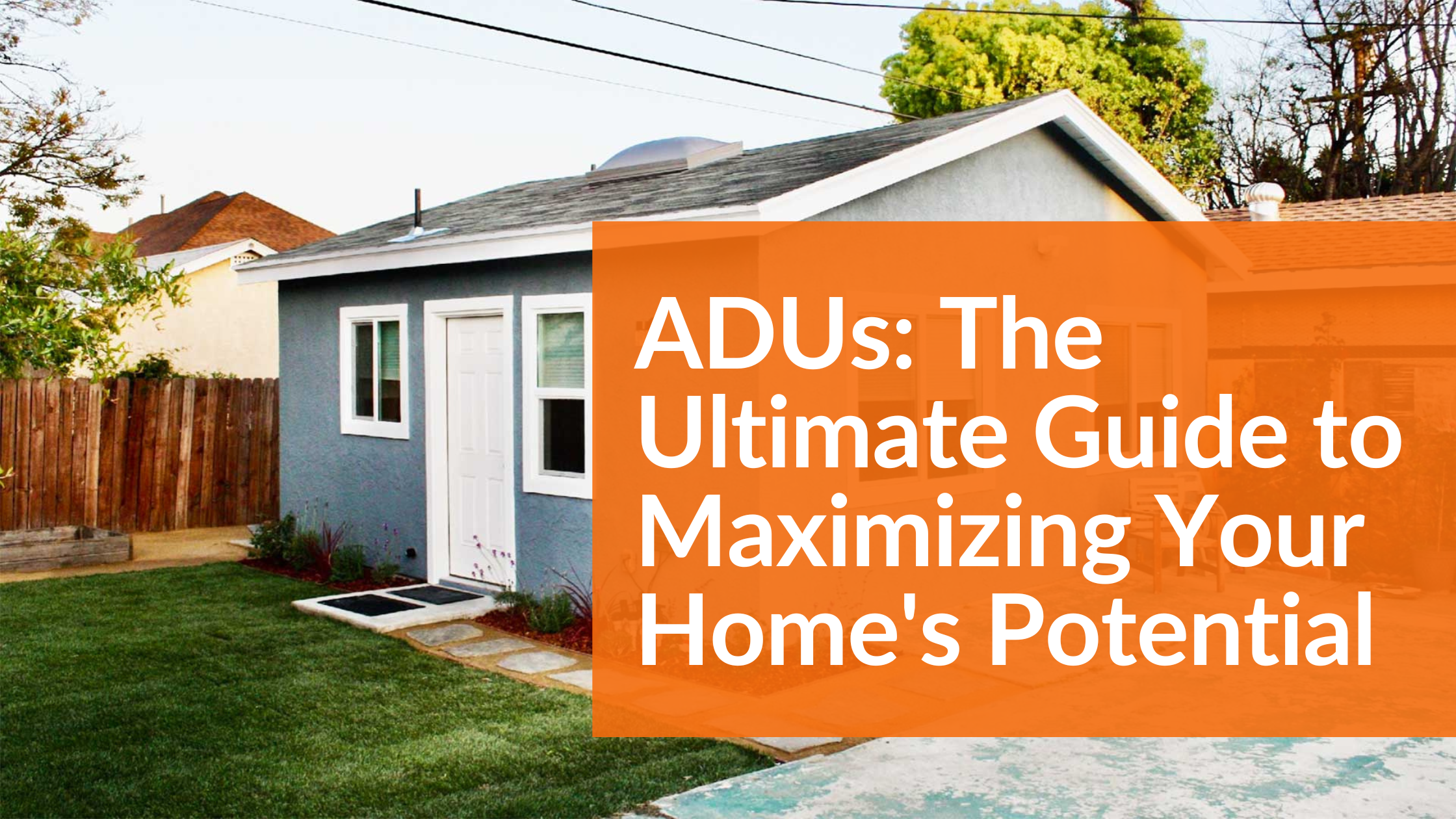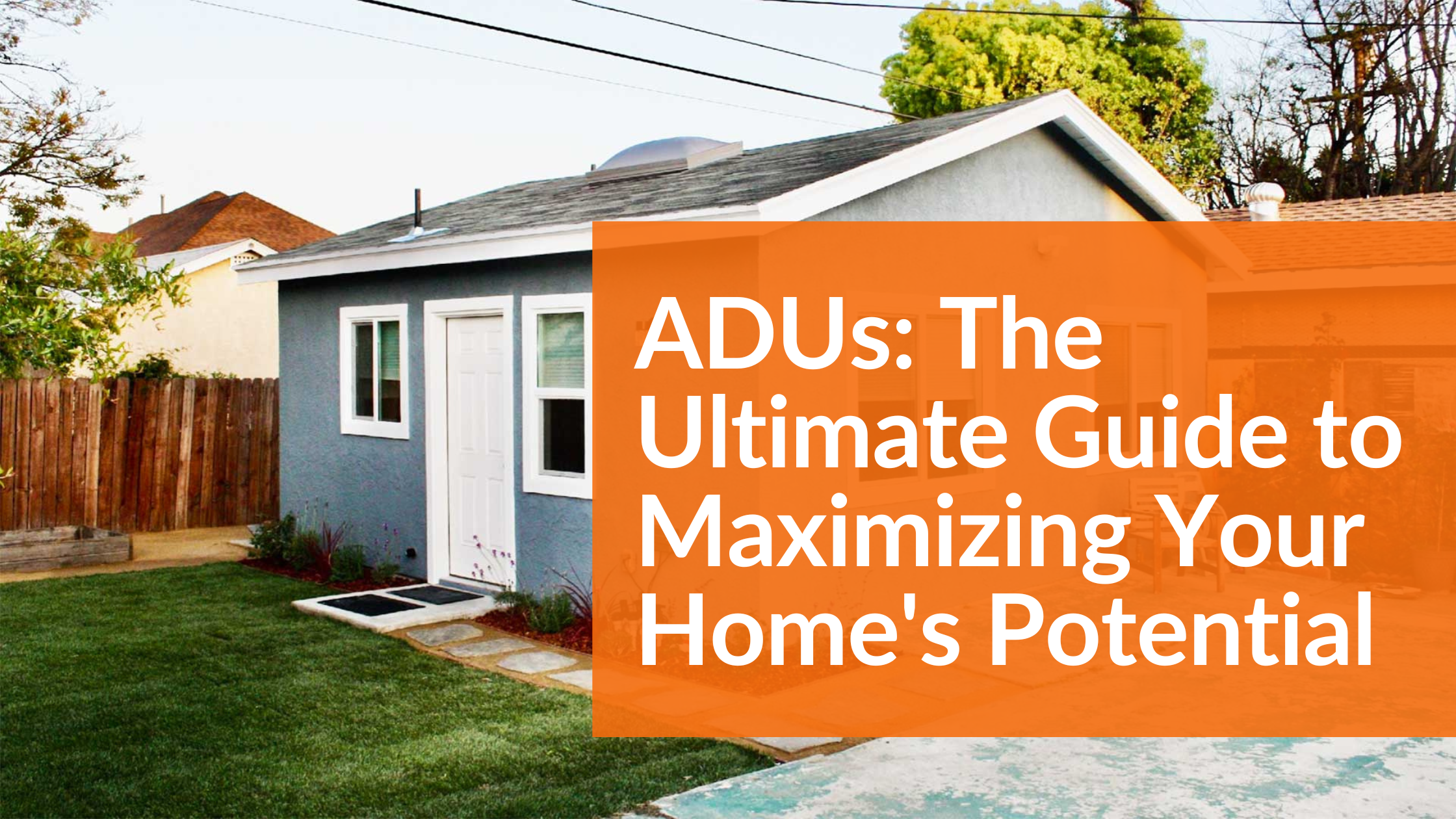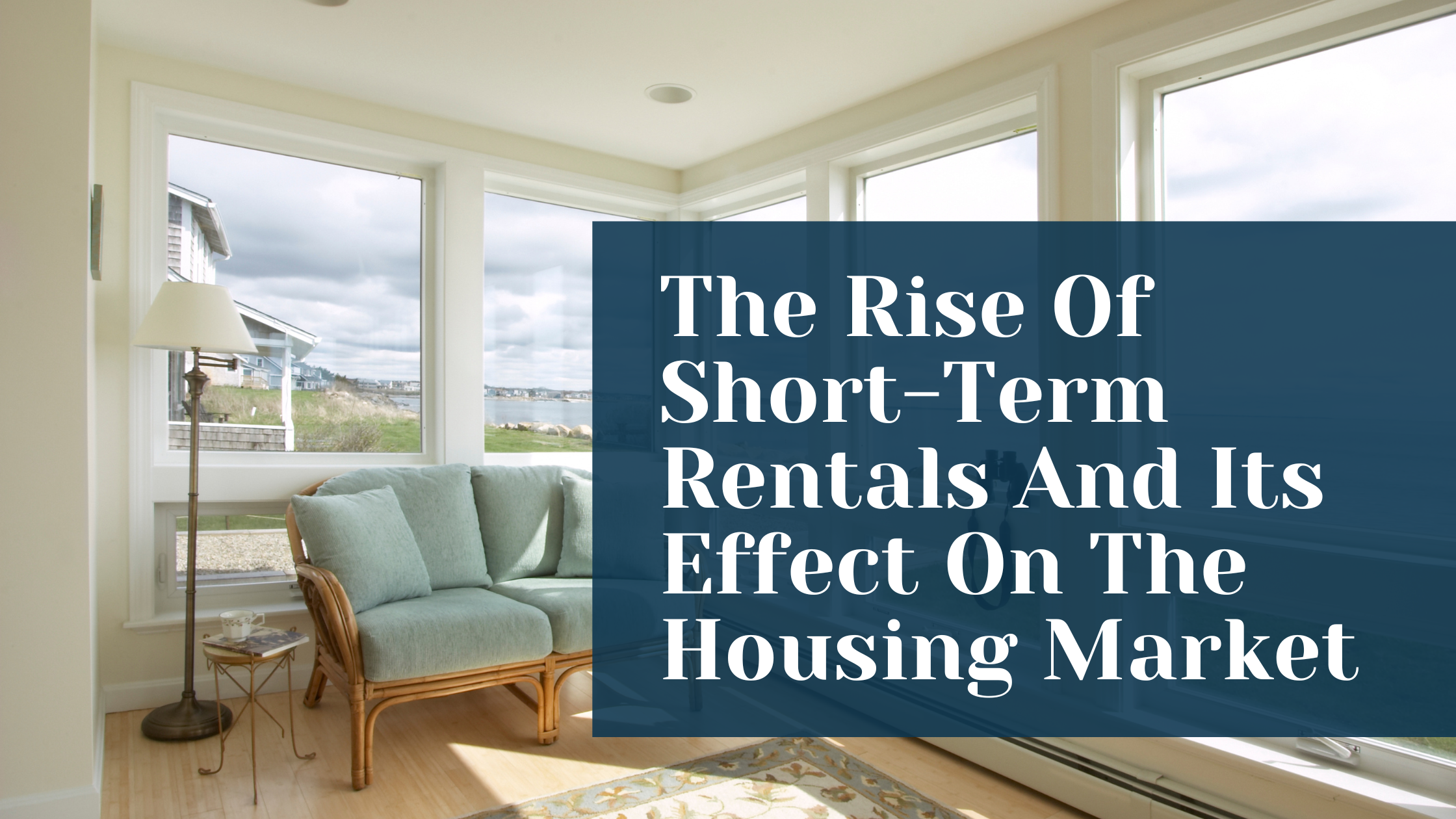ADUs: The Ultimate Guide to Maximizing Your Home's Potential


Accessory dwelling units (ADUs) can be an attractive investment opportunity for first-time landlords or individuals who would like to enter the rental market but can't afford to do so in competitive housing markets. Affordable multifamily units (ADUs) can be a great investment opportunity for the proper people because they are cheap, adaptable, and simple to finance. Although accessory dwelling units (ADUs) can be a lucrative investment for some, they aren't a good fit for everyone. Here are the ins and outs of investing in accessory dwelling units (ADUs) and what you should expect from such a venture.
What is an Accessory Dwelling Unit
An auxiliary dwelling unit (ADU) is a secondary dwelling that serves as a supplement to the primary dwelling on a property. This type of dwelling is typically an appendix to a main house, and it adds anywhere from 400 to 1,000 square feet to the main house. ADUs, often known as granny flats or in-law suites, are secondary dwelling units attached to a primary residence.
To qualify as an accessory dwelling unit (ADU), a dwelling must provide a kitchen, a bathroom, a private living area, and a private sleeping area that is completely independent of the main dwelling. Most accessory dwelling units are freestanding, but those that meet the criteria can also be converted from an attic or basement. A basement apartment that has a common entry with the main home is not an accessory dwelling unit because it does not meet the definition of an ADU. That holds true even for a converted garage that only has a bedroom and bathroom, but no kitchen.
Types of ADUs
- Detached structures - Detached accessory dwelling units (ADUs) are the most common type of ADU due to privacy and convenience concerns. Converted garages are one option, but new buildings are usually necessary to meet the demand for extra living space. Homeowners may construct detached ADUs to accommodate aging parents or traveling relatives, generate rental income, or increase the value of their primary residence.
- Attached external structures- ADUs that are attached to a primary dwelling unit are called "attached exterior structures," and they look like apartments added to the back of a house. In cases when there isn't enough space for a detached construction but the existing structure of the home is suitable for an apartment addition, this may be the best option.
- Attached internal structures- Internally attached dwelling units (ADUs) are those that are completely contained within an existing structure. Basement and attic conversions, as well as garage conversions, are the most typical examples of attached interior buildings.
WHY ADUs
Gen Y accounts for 37% of the market1, thus appealing to this demographic with the adaptability of an ADU can be a good move for investors. Given that the majority of Millennials are in their late twenties to early forties, it's possible that they will have elderly parents who need financial help with housing. Yet, Generation X is next in line, and they are the most likely to have adult offspring who have returned home to save money. With the possibility that providing shelter for relatives might become a need, 12% of 2021 buyers overall invested in properties with space for multiple generations.
One-and-a-half times as many American households now have accessory dwelling units as did so in 2003, according to data by Freddie Mac published in 2020. The takeaway is obvious: ADUs can be very lucrative during periods of high housing demand. The top states with the highest concentrations of ADUs are, unsurprisingly, those with the fastest-growing populations, such as Florida, Texas, California, and Georgia.
Benefits of an ADU
Those that are game to move into this area can gain from adding an accessory living unit. It's true that accessory dwelling units (ADUs) aren't the best option for every landlord or homeowner, but they may be a huge boon for those who are pursuing the fix-and-flip and rental business models.
Additional Returns on Investment
Probably the most important way in which ADUs assist buy-and-hold investors is through the opportunity for supplemental income. Assuming the investor is acting lawfully and is familiar with state and municipal regulations pertaining to accessory dwelling units, the ADU can be rented out to a second tenant, thereby doubling the income from the property.
You can easily supplement your income by renting out a secondary dwelling unit. With a reliable tenant in place, the investor can count on a steady flow of income. As accessory dwelling units (ADUs) are already a component of the main house, investors do not have to worry about securing financing for a second property. Investors can get the benefits of owning a rental property with less money out of pocket.
Increase in Property Value
Property values may increase as a result of the addition of these units. Porch.com found that in the largest U.S. cities, the average price of a property with an ADU was 35% higher than the average price of a home without an ADU in 2021. To increase their profit, some "flippers" convert empty outbuildings like garages into accessory dwelling units (ADUs) before selling the properties.
Appealing to both Renters and Buyers
ADUs are popular among renters because they offer tiny, independent living spaces away from the typical apartment building. A residential home buyer interested in future rental opportunities, or a buyer in need of options for parents or adult children, could be interested in a house with an additional unit if you intend to flip it.
The Need for Housing
It's a good time to consider ADUs as an investment opportunity due to the current housing shortage. More and more people who could buy a house are instead opting to rent in today's market, making it a great time to invest in single-family rentals (SFRs). The CoreLogic Single-Family Rent Index showed that in October 2021, rents for single-family homes in the United States rose by 10.9%, the highest annual rate of increase in over 16 years. 5 For investors looking to capitalize on the rising demand for housing, accessory dwelling units (ADUs) are a great addition to a buy-and-hold portfolio.
Disadvantages of Having an ADU
As with any property feature, ADUs come with their fair share of advantages and disadvantages. Think about the drawbacks before committing funds to construct a new type of home on your land.
-
Zoning- Because of zoning regulations, accessory dwelling units (ADUs) are not allowed in all neighborhoods, and in others, the rules are quite stringent. Before moving on, it is highly recommended that you learn how to research zoning laws in your area and make sure you have a thorough understanding of what is and is not permitted. If you violate local regulations, you could face large fines or perhaps the whole loss of your business.
- Expenses- Costs associated with constructing an ADU are comparable to those of constructing a small house. You can buy prefab houses from some firms, and they may be set up in a short amount of time, but you'll still need to run utilities like electricity and plumbing before you can move in. The total cost may range from $30,000 to $300,000, depending on individual tastes and the specifics of the house in question.
- Rise in Property Taxes- Adding an accessory dwelling unit (ADU) to a property may raise taxes, depending on local ordinances. Consider this while calculating building costs.
- Less Outdoor Space- The amount of usable land immediately becomes less after construction begins. This may not matter in certain cases, but on smaller lots, an additional dwelling could eliminate any outdoor entertainment space, so decreasing the desirability of your home and possibly lowering the number of purchasers interested in it.
Investing in ADUs
Do your homework on the project's benefits and drawbacks as well as its potential sources of funding before going in headfirst. Gaining knowledge of local legislation and real estate investing in general is essential before beginning construction on an ADU, which may be a wonderful method to enhance property values, add more occupancy, and drive income. Remember these guidelines as you move forward with your investment in an ADU for rental purposes.
Understanding Ordinances
Knowing the state and local regulations, overlays, and timetables for ADU buildings is crucial before undertaking any form of construction. Get in touch with local planning offices to find out what's feasible in your area and to get a better idea of the costs and fees associated with acquiring the necessary approvals and permits. The local government may be slow to act, so it's a good idea to talk about the approval process.
Approved Design and Plans Before Buying
The idea of getting a head start on construction is enticing, but only if you know you're on the right track. When you start placing orders, make sure you have a solid plan in place, including verifying that the designs will pass city codes. Moving too quickly could result in wasted money or costly penalties due to rigorous restrictions relating to size and set-back in some locations. You don't want to waste time and money on an accessory dwelling unit that doesn't comply with building codes.
Do not just jump into building, hoping that everything will fall into place. Have a plan. You should familiarize yourself with the laws governing short-term rentals, such as holiday and summer houses, and the rules around renting to many renters on the same property. Learn about cost estimates so that you can budget for building and other expenses.
Speak with a Lender
Understanding the ins and outs of financing an ADU before construction begins is essential because they are a relatively new investment possibility. Talk to a lender about your possibilities for getting a loan, the amount you may borrow, how long you have to pay it back, and anything else related to financing the building of an additional home on your land. You should be aware of your lending alternatives and seek assistance from a professional who is familiar with the ADU market to locate a loan that best suits your needs.
ADUs are an excellent option for people who already own a rental property but wish to expand their options, increase their property's worth for resale, or enter the housing market but are priced out of buying brand-new homes. The financial aspects of building an accessory dwelling unit (ADU) may seem daunting, but if you take the time to learn the ins and outs of the ADU process in your area and locate the right lending partner, you can skip the trip to the hardware store.
Conclusion
An ADU can provide a great addition to your next investment. If an ADU is something you'd like to add, reach out to us to start the process and get an idea of timing and requirements needed to move forward.


.png)